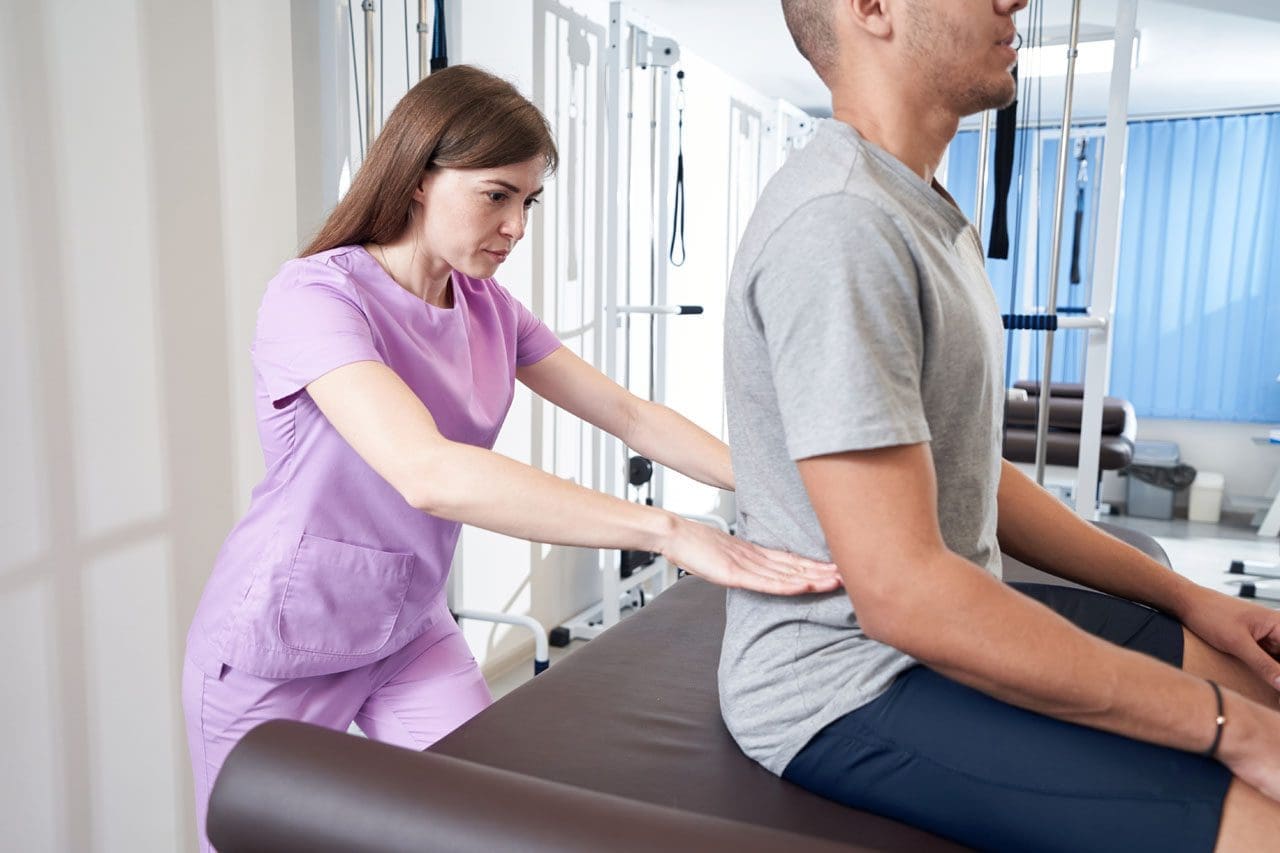Postural Assessment for Optimal Movement Efficiency
Can postural assessments help identify problems with how a person stands or sits, which can lead to various musculoskeletal issues?

Postural Assessment
Proper posture is an exercise in which the muscles support the skeleton in a comfortable, stable, and efficient alignment. Healthy posture is present when the body is still and when moving. However, numerous factors can affect and hinder posture. These include daily wear and tear, injury, illness, or a condition. A posture assessment is a process that identifies posture issues and their root causes, often using visual and palpation techniques, and can help determine appropriate treatment or exercises. (Science Direct, 2007)
Visual Assessment
- Observing the body’s alignment and symmetry from different angles (anterior, posterior, and lateral views).
Palpation
- Feeling for muscle imbalances and/or tenderness. (Singla D., & Veqar Z., 2014)
Movement Analysis
- Assessing how a person moves and if there are any limitations or compensations. (Physiopedia, 2025)
Importance and Benefits
Early Identification
- Helps identify potential problems early, before they become more serious.
Targeted Treatment
- Allows for the development of personalized treatment plans to address specific postural issues.
Injury Prevention
- It can help prevent injuries by addressing underlying postural imbalances.
Postural Assessment Tools
Some tools used include:
- Inclinometers
- Posture and Postural Ability Scale (PPAS). (Du, S. H. et al., 2023)
Basic Assessment
Stand Upright
- The patient stands with their feet shoulder-width apart, arms relaxed at their sides, and looks straight ahead. (Science Direct, 2007)
Alignment Observation
- Head: Is the head aligned over the shoulders, forward, or tilted?
- Shoulders: Are the shoulders level, or are they rounded forward?
- Back: Is the back straight, or is there excessive curvature (kyphosis or lordosis)?
- Pelvis: Is the pelvis level or tilted forward or backward?
- Knees: Are the knees straight or slightly bent?
- Feet: Are the feet flat on the ground, or is there excessive arch or pronation?
Palpate for Muscle Imbalances
- Feel for tight or weak muscles that may be contributing to poor posture. (Singla D. & Veqar Z., 2014)
Consider the Patient’s Activity Level and History
- Consider their daily activities, work environment, and any previous injuries. (Du, S. H. et al., 2023)
Wall Test
- The patient stands against a wall with their feet shoulder-width apart and heels about 6 inches from the baseboard.
- If they have good posture, their ears will be vertically aligned with their shoulders, and their head will be no more than three finger widths from the wall. (Physiopedia, 2025)
Postural Issues Examples
Rounded Shoulders (Hyperkyphosis)
- Forward rounding of the upper back.
Forward Head Posture
- Head positioned too far forward.
Lordosis
- Excessive inward curve of the lower back.
Flat Back
- Reduced natural curve of the lower back.
Muscle Imbalances
- Tightness or weakness in specific muscles. (Du, S. H. et al., 2023)
Professionals Who Can Perform a Posture Assessment
Physiotherapists
- Professionals trained in assessing and treating musculoskeletal problems.
Chiropractors
- Professionals who focus on the spine and nervous system.
Fitness Professionals
- Personal trainers or other fitness professionals can use posture assessments to help clients improve their posture and movement.
Ergonomists
- Professionals who specialize in designing workspaces and environments to promote good posture and reduce strain.
Injury Medical Chiropractic & Functional Medicine Clinic
Talk to a healthcare provider to learn what interventions would help the most. Injury Medical Chiropractic and Functional Medicine Clinic works with primary healthcare providers and specialists to develop an optimal health and wellness solution. We focus on what works for you to relieve pain, restore function, and prevent injury. Regarding musculoskeletal pain, specialists like chiropractors, acupuncturists, and massage therapists can help mitigate the pain through spinal adjustments that help the body realign itself. They can also work with other medical professionals to integrate a treatment plan to resolve musculoskeletal issues.
Multidisciplinary Evaluation and Treatment
References
ScienceDirect. (2007). Postural Assessment – an Overview. Evidence-Based Manual Medicine, 2007. https://www.sciencedirect.com/topics/medicine-and-dentistry/postural-assessment#recommended-publications
Singla, D., & Veqar, Z. (2014). Methods of postural assessment used for sports persons. Journal of clinical and diagnostic research: JCDR, 8(4), LE01–LE4. https://doi.org/10.7860/JCDR/2014/6836.4266
Du, S. H., Zhang, Y. H., Yang, Q. H., Wang, Y. C., Fang, Y., & Wang, X. Q. (2023). Spinal posture assessment and low back pain. EFORT open reviews, 8(9), 708–718. https://doi.org/10.1530/EOR-23-0025
Physiopedia. (2025). Sports Screening: Postural Assessment. https://www.physio-pedia.com/Sports_Screening:_Postural_Assessment#:~:text=Postural%20assessment%20as%20part%20of,tone%20can%20cause%20postural%20faults.

